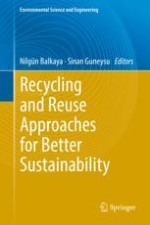2019 | OriginalPaper | Buchkapitel
Biofuel Production from Carbon Dioxide Gas in Polluted Areas
verfasst von : Delia Teresa Sponza, Cansu Vural, Gokce Güney
Erschienen in: Recycling and Reuse Approaches for Better Sustainability
Aktivieren Sie unsere intelligente Suche, um passende Fachinhalte oder Patente zu finden.
Wählen Sie Textabschnitte aus um mit Künstlicher Intelligenz passenden Patente zu finden. powered by
Markieren Sie Textabschnitte, um KI-gestützt weitere passende Inhalte zu finden. powered by
